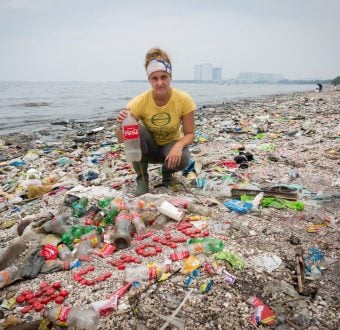I recently spoke with Dr. Gerald Poje, founding member of the U.S. Chemical Safety and Hazard Investigation Board (CSB), about the Obama administration’s current opportunity to strengthen chemical plant safety. Dr. Poje is trained as a toxicologist, taught Occupational Environmental Health at the George Washington University School of Public Health and Health Services, and worked as an on-the-ground investigator into explosions, fires, and chemical releases while at the CSB.
The Start of the Chemical Safety Board
When Bill Clinton took office in 1992, he was the first president to nominate board members to the CSB. But Congress did not approve funding for the Board until 1998 after a series of catastrophic incidents occurred, including an explosion at a Morton International facility in Paterson, New Jersey.
The CSB launched an investigation into the Morton explosion and found that it was caused by a “runaway reaction,” which occurs when chemicals mixed in a large vessel become overheated, and the resulting heat and pressure cause an explosion. The CSB recognized that a number of disasters were occurring because of reactive chemical hazards (Bhopal being the most well-known), and that serious weaknesses in occupational health and safety regulations were leading to similar accidents across the country. Dr. Poje explains, “the gaping hole in the safety regulations was that neither one of them asked the chemical facilities about reactive hazards.”
The CSB responded with a major report in 2002 that called for policy reformation. Today, the Board is still awaiting comprehensive responses from executive agencies to the report’s recommendations.
Calls for Inherently Safer Technology
Also many years overdue are Inherently Safer Technology (IST) requirements that the CSB has encouraged. Dr. Poje emphasized the simplicity of enacting such regulations through comparisons to other countries’ standards and the cost-savings of prevention over emergency response. For example, when the U.S. began stationing troops in Afghanistan, the U.S. government pressured a Pakistani fertilizer producer to change its product in order to protect U.S. troops from improvised explosive devices (IEDs) built from ammonium nitrate fertilizers. The dangers of ammonium nitrate are well known to Americans, both in the context of terrorism (as seen in the Oklahoma City bombing) and industrial accidents (as seen in West, Texas).
Despite these inherent risks and examples of other countries’ transitions to non-explosive fertilizers by simply changing the ammonium nitrate formula, the U.S. has yet to establish these safety standards domestically.
This type of requirement is not only feasible and protective of communities but would also benefit businesses by creating opportunities for innovation. Removing these threats to communities is also economical in its own right when considering the monetary costs of tragedies. The West, Texas explosion is conservatively estimated at $230 million in damage. Where is a small community expected to get that amount of money? Dr. Poje acknowledges that federal emergency aid has been provided but emphasizes that it “falls woefully short of needs.”
Overcoming Barriers to IST Requirements
So what is stopping the Obama administration from issuing IST requirements that will save lives and money? Dr. Poje attributes the administration and its executive agencies’ foot-dragging to a lack of “willfulness to do what needs to be done.” The benefits of IST have been widely known for years, yet the only policies concerning IST that currently exist are voluntary recommendations that have proven largely ineffective.
The good news is that an Executive Order issued by the President in the wake of the West, Texas explosion is “the greatest opportunity in recent history” to implement IST requirements. Yet time is running out. If the President and his executive agencies do not move quickly, then the whole process will have to be restarted with a new administration that may not be as receptive.
Dr. Poje is clear that “this is the President’s call…You can’t pretend that you’re concerned about the safety of the people if you don’t embrace this as the number one solution to this problem.” Ceding to industry complaints of higher costs—which ignore the economic gains of safer operations—calls into question the President’s priorities. Dr. Poje asks, “whose costs are you more worried about?” The communities like West, Texas forced to rebuild due to industry recalcitrance to operate safely? Or the facilities unwilling to invest in life-saving upgrades? The longer the administration waits to act, the more likely it is that another catastrophic incident will occur.
| Brief History of the Chemical Safety BoardThe CSB was created by the 1990 amendments to the Clean Air Act in the aftermath of a “series of catastrophic incidents following the Bhopal tragedy,” including a horrific spate of accidents in Texas that killed 49 people. In addition to creating the CSB, the so-called Bhopal amendment required the Occupational Health and Safety Administration (OSHA) to address catastrophic risks to workers through its Process Safety Management Standard (PSM) and required the Environmental Protection Agency (EPA) to address hazards to communities through its Risk Management Program (RMP). The CSB is an independent agency and does not have enforcement power. It is charged with investigating the causes of chemical disasters and recommending ways to prevent them. This includes recommending that agencies such as the EPA issue new requirements so that workers and the public do not have to rely on chemical facilities to adopt the CSB’s nonbinding recommendations. |


